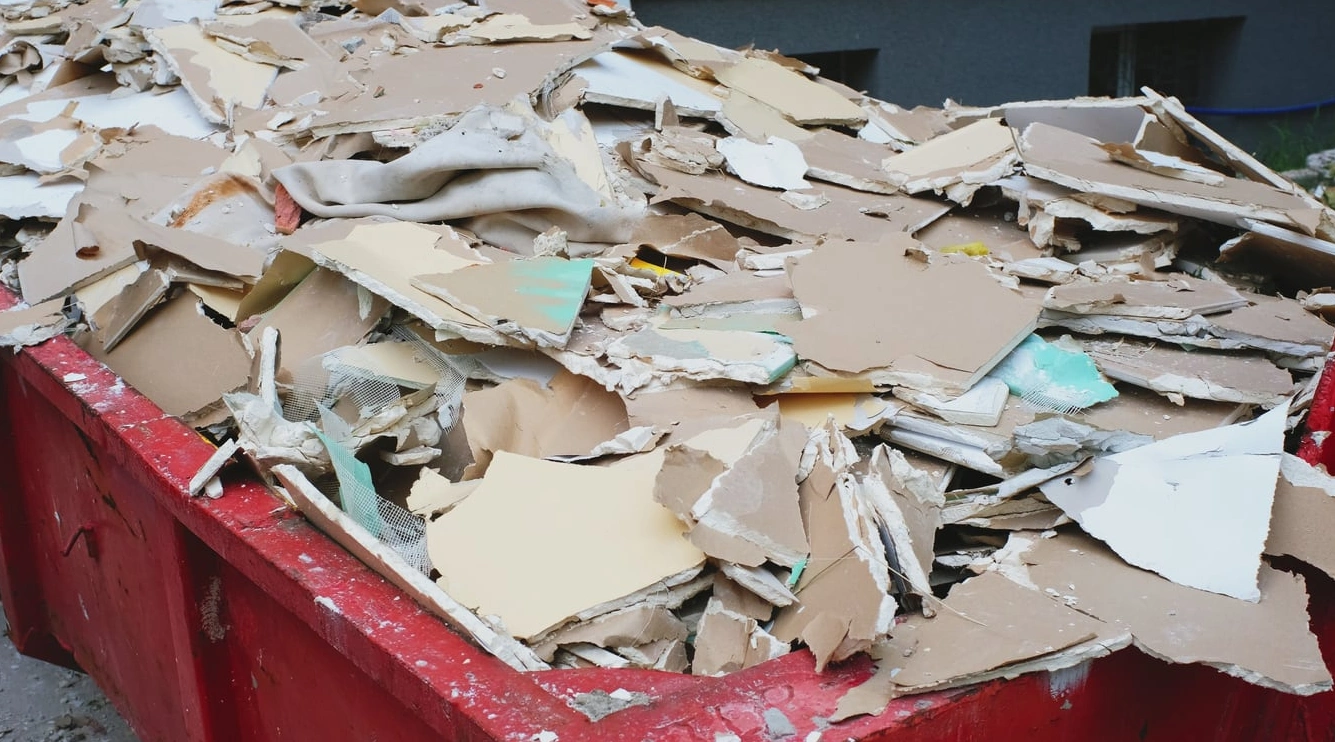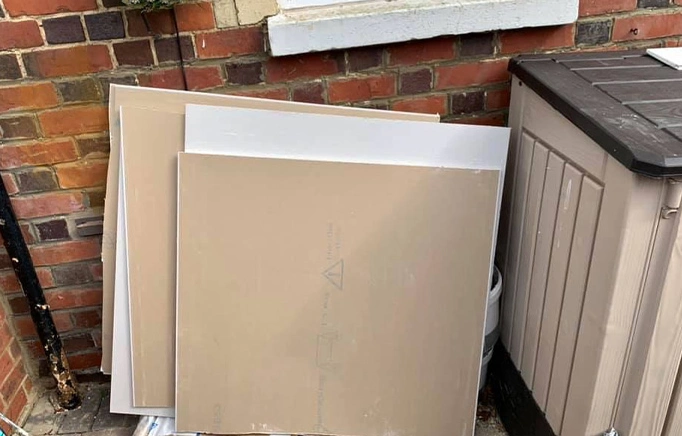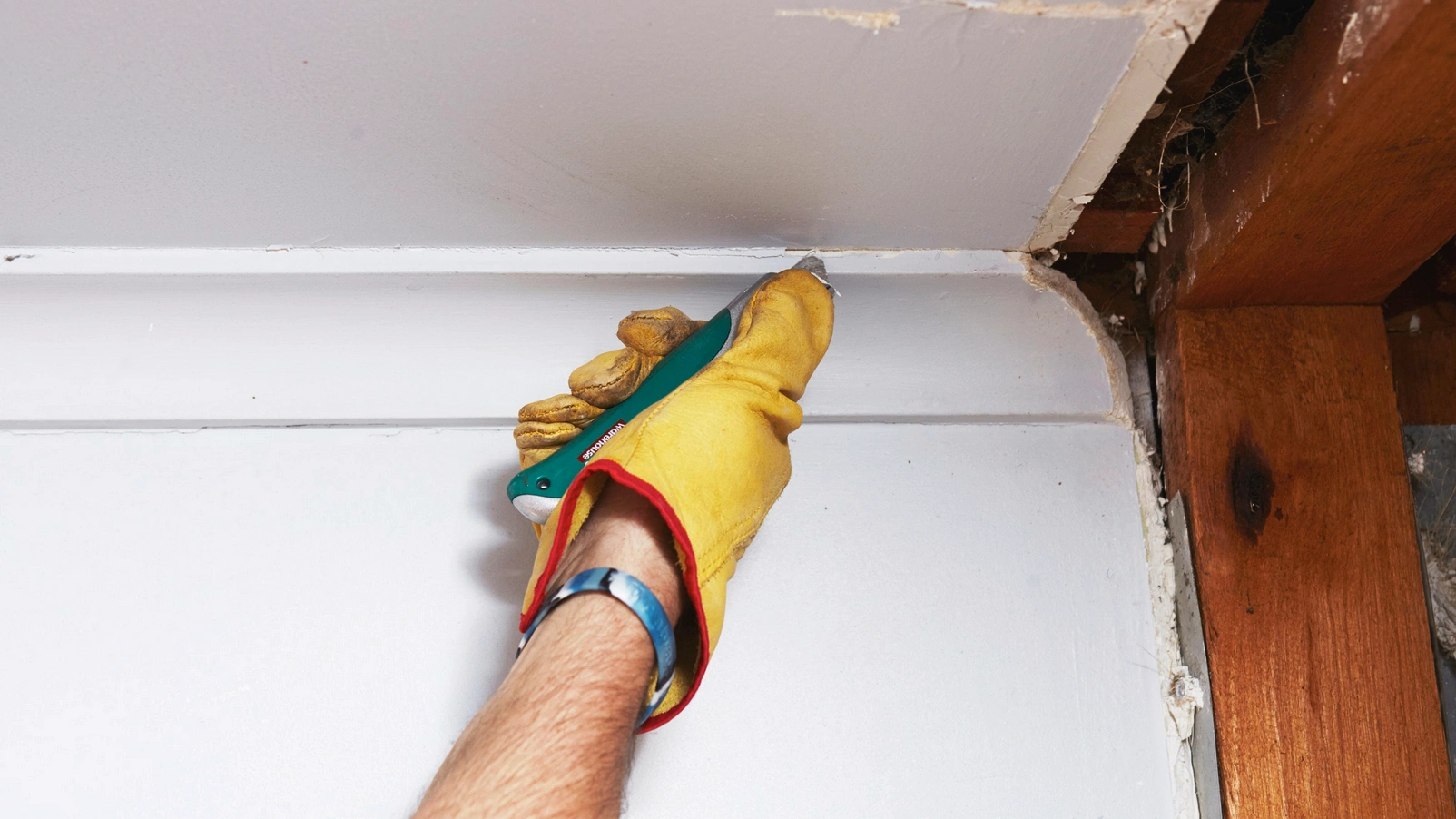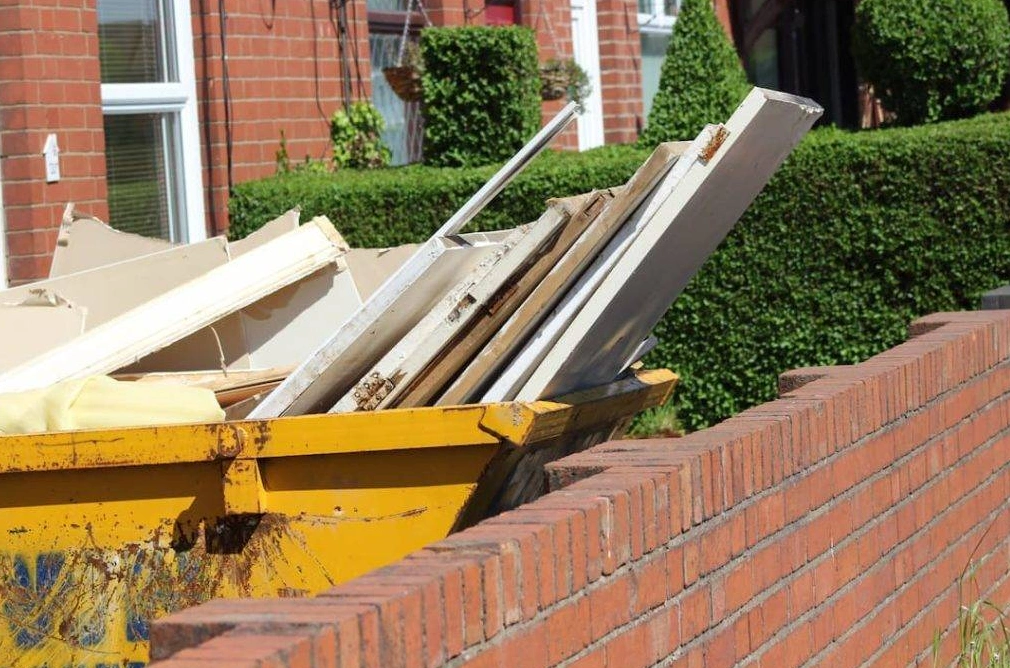How to dispose of plasterboard
If you ever need to remove plasterboard, you need to know how to handle and dispose of plasterboard safely and legally. This guide aims to give you all the facts you need when it comes to disposing of plasterboard including where to dispose of plasterboard.
Let’s start though with the actual removal and handling of plasterboard.

ETM Recycling
What you need for the job
Once you’ve identified the extent of the plasterboard you wish to remove, you need to assemble the following tools:
- Safety goggles
- Gloves
- String footwear
- Dust mask
- Screwdriver
- Dust sheets
- Claw hammer
- Stud finder
- Stanley knife
- Crowbar

Zero Waste Group
How to remove plasterboard
First of all, you need to prepare the area where you are removing and then disposing of plasterboard. Start switching off any electricity you’re working near, cover the floor and any furniture with dust sheets and ventilate the room.
Next, you need to protect yourself. Put on gloves, sturdy boots, safety goggles and a dust mask. Now you’re ready to get stuck in. Begin by removing skirting boards, electrical fittings and architraves. If the plasterboard you are taking down has been wallpapered or painted, run a Stanley knife around the edges so they come away without damage. You need to also detect any metal or timber studs or battens behind the plasterboard. This not only makes it easier to remove the plasterboard, it minimizes damage, too.
Using a Stanley knife, cut into or score along the seams or any weak points. If the plasterboard is screwed or nailed on, use a screwdriver or crowbar to pry the plasterboard away from the framework. Doing this slowly and methodically will reduce the amount of dust created.

Bunnings
Hazards of handling and disposing of plasterboard
Plasterboard contains fine dust, and removing it can cause the dust, if inhaled, to irritate your lungs, which is why a FFP3 dust mask is always recommended. Gypsum in plasterboard can irritate the skin, too, so wear gloves and wash your hands after handling.
Handling plasterboard itself comes with other risks, too. Sharp edges can cause cuts, hence wearing gloves when handling it. Large plasterboard sheets are heavy, so take care to use correct lifting techniques and get help if you need it, rather than overdoing it.
Finally, if working on a pre-1999 property, you need to check behind the plasterboard to see if asbestos insulation is present. If there is, you need to stop immediately and get an asbestos specialist to carry out a survey.

Skip Hire
How do you dispose of plasterboard?
Once you’ve safely removed the plasterboard from the property, you need to dispose of plasterboard in an environmentally responsible way and in line with current regulations.
Plasterboard contains gypsum which can give off dangerous gases as it decomposes. That’s why it cannot be simply disposed of along with general or landfill waste. So, for safe plasterboard disposal, we suggest you do the following:
- Check your local council waste disposal policy – you’ll find that most recycling centres will accept plasterboard, however, there may be a specific way and area that you can do this. Visit your local council’s website to discover which sites waste disposal centres will accept plasterboard.
- Take it to a waste centre that accepts plasterboard – do first check whether you need pay any plasterboard disposal fees or have to book a time slot.
- Recycle it – it is actually possible to recycle plasterboard into new gypsum-based products. Search online for a recycling company that specialises in this.
- Hire specialist plasterboard skips – if you are disposing of plasterboard in large quantities, there are specialist companies that provide skips that are either dedicated, or part-dedicated, to plasterboard.

Budget Waste Management
We’re here to help
If you have any questions regarding how to dispose of plasterboard in a safe and environmentally friendly way please visit your local Howarth branch, or contact our customer services on 01472 907051. To view our range of insulated plasterboard, fire resistant plasterboard and moisture resistant plasterboard, please click here.
Recent Posts
-
Garden Gate Buying Guide
Is your next project adding a garden gate to enhance, protect and secure your garden? Before you do
-
How to cut plasterboard
Whether you're a seasoned tradesperson or trying your hand at DIY, knowing how to cut plasterboard c
